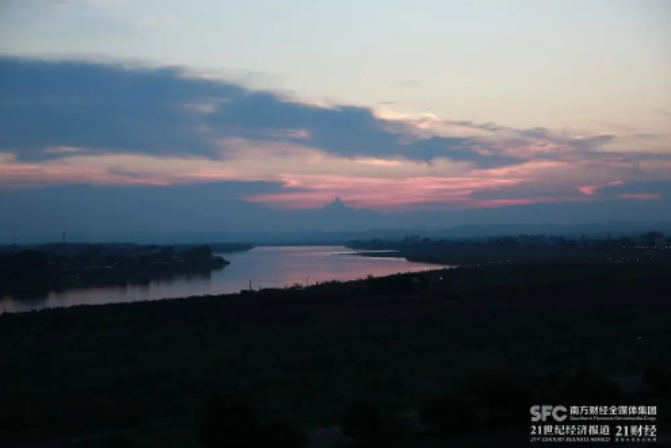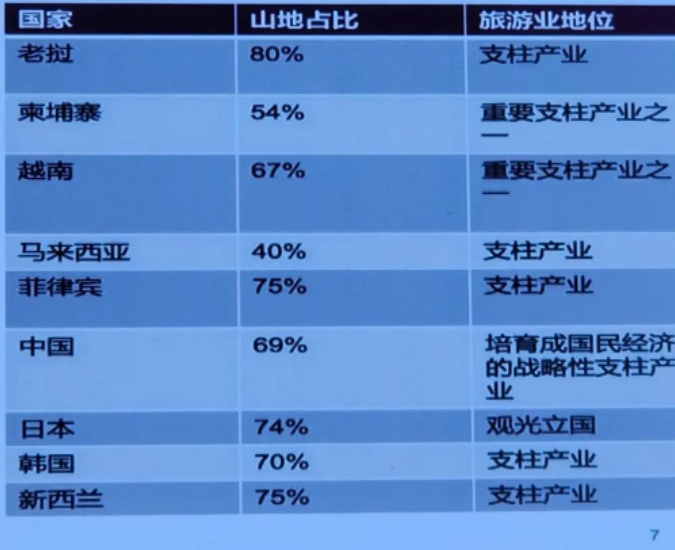China-laos railway brings fire to tourist attractions in Laos to accelerate the promotion of the Pan-Asian high-speed rail economic circle
On June 2, RCEP came into full force for 15 signatory countries. A tourism network of world-class tourist destinations and routes is taking shape.
Tourists are crossing the China-Laos border by train for the first time.
Gu Ying, who likes to travel in Yunnan, has to go to Pu 'er by coach from Kunming every once in a while, six or seven hours to arrive. "I can't do anything from morning till night." She said that after the opening of the China-Laos railway was different, the same journey only took about three hours. When she was ready for vacation, she took the train all the way to Luang Prabang, Laos.
On May 28, Vientiane native Su (a pseudonym) and her relatives took a direct flight home from Chongqing to Vientiane, the capital of Laos, after a tour of many cities in China. A week ago, they took the China-Laos international tourist train from Vientiane to Kunming, from Kunming to Beijing, Chongqing, Hunan. Su told the 21st Century Business Herald reporter who flew to Vientiane that in the past, if you want to come to China, you can only take international flights. But after the epidemic, the train ran, and it was comfortable and cheap.
The China-Laos railway is 1,035 km long. The China-Laos international train was launched on April 13, connecting Kunming to Vientiane and Vientiane to Kunming in the morning.

The Mekong River

Sunset over the Mekong River
The China-Laos railway has greatly stimulated the outbound travel of Chinese tourists and the increase of overseas tourists in terms of transportation convenience. As of May 23, the China-Laos railway has carried 16 million passengers, according to data released by China National Railway Group Co., LTD. Among them, during the "May Day" small holiday, the China-Laos railway became a golden tourist route, sending more than 90,000 passengers in a single day, setting a record since the opening of operation.
"Rice noodles in Kunming in the morning and coffee in Vientiane in the evening." On May 29, Anongdeth Phetkaysone, deputy general manager of Lao-China Railway Co., Ltd. participated in the "International Mountain Tourism Day" theme event in Vientiane, said that the opening of Lao-China railway not only made Kunming, Puer and Xishuangbanna in Yunnan Province more popular in tourism, but also brought fire to the Lao scenic spots along the railway, promoting domestic and inbound tourism in Laos.
With the key nodes of the Trans-Asian Railway economic circle being opened and the RCEP agreement coming into effect, the tourism industry of the Lancang-Mekong River Corridor is speeding up, and a world-class tourism corridor is taking shape.
Vientiane to Luang Prabang reduced to two hours
On May 30, the International Mountain Tourism Alliance held a mountain hostel cooperation exchange meeting in Luang Prabang. The staff took a train from Vientiane at more than 7 o 'clock in the morning, and arrived in Luang Prabang, the ancient capital of Laos and the world's "double heritage site" in two hours. That night, they arrived in Vientiane by train. Before the train opened, the distance between Vientiane and Luang Prabang was more than 300 kilometers, and it usually took about 12 hours to arrive by bus.
The ancient capital Luang Prabang, located more than 500 kilometers from Vientiane, is the oldest surviving town in Laos, dating back more than a thousand years. According to the UN expert group, there are 679 ancient buildings with preservation value in Luang Prabang. In December 1995, Luang Prabang was listed by the United Nations Educational, Scientific and Cultural Organization (UNESCO) as a World Heritage city. It is a popular destination for both Chinese and Western tourists with simple folk customs, intact natural ecology and no overly commercial interpersonal relationships.
Before the operation of international tourist trains, the passenger trains on the China-Laos railway were divided into the domestic section of China, which operated between Kunming and Mohan, and the Lao section, which operated between Vientiane and Boten. As early as August 2016, Chinese and Lao enterprises registered in Vientiane to set up Laos-China Railway Co., LTD., responsible for the investment, financing, design, construction and operation of the China-Laos railway project from Botin to Vientiane, with 70% of the investment from the Chinese side and 30% from the Lao side.
"There are 10 passenger stations in the Lao section of the Laos-China Railway, namely Vientiane, Phongkhon, Vang Vieng, Kasi, Luang Prabang, Mong Ah, Mong Sai, Namau, Nathu and Boten." Anongdeth Phetkaysone says the railway passes through many tourist areas in Laos.

Vientiane landmark Triumphal Arch
Among them, Boten is located in Luang Namthar Province, Laos, from China's Xishuangbanna Mohan port into Laos border port. Moncay is the capital of Oudomseh Province and Luang Prabang is the capital of Luang Prabang Province. Gassi, Vang Vieng, Phongkhon and Vientiane are all located in Vientiane Province of Laos. Vang Vieng is another famous tourist destination in Laos. In addition to food, there are a variety of interesting games and stalls in the Vang Vinh Night Market, and the romantic and bright Mekong River at night attracts many Chinese people to go.
The Lao section of the Lao China-Laos Railway crosses many mountains and rivers, with complex geological structure, high geothermal, high ground stress, high seismic intensity and active plate movement, making it very difficult to build. However, on the basis of the huge project including 167 tunnels and 301 Bridges, the Chinese infrastructure team has circumvented the six natural and cultural protection areas along the line to avoid occupying the national protected forests of Laos, and the total green area of the whole line exceeds 3 million square meters, ensuring the green water and green mountains of Laos as before.
"The Laos-China Railway has brought great convenience to Lao tourism in transportation." Anongdeth Phetkaysone said that the passenger volume of the Laos section far exceeded expectations. Due to the surge in tourist arrivals, five trains are running every day, including regular trains and smoke-free trains.
He introduced that from December 3, 2021 to May 18, the Laos-China Railway officially operated, the Lao section of the passenger volume reached more than 2.45 million passengers, an average of 4,600 passengers per day. This New Year, the Laos section reached a peak of 11,900 passengers.
Since its opening, the railway has recruited more than 3,500 Lao employees and indirectly created more than 100,000 jobs in logistics, transportation, trade, tourism and other industries.
China-laos international freight train to promote the Pan-Asian high-speed rail economic circle
"On April 13 this year, the Lao-China Railway added a cross-border passenger train from Vientiane to Kunming, for D888. It is the first passenger train in the history of China and Laos, providing a convenient option for cross-border tourism." Anongdeth Phetkaysone said statistics show that the average number of cross-border tourists entering Laos by train every day has remained at just over 200.
The China-Laos international passenger train runs one in each direction every day, and stops at 8 stations in South Kunming, Puer, Xishuangbanna, Mohan, Botin, Luang Prabang, Vang Vientiane. Flight D887 departed from Kunming South at 8:08 am and arrived in Vientiane at 17:38 PM on the same day. Vientiane to the south of Kunming is D888, Vientiane at 9:08 Beijing time, arrived in the south of Kunming on the same day.
The international passenger train of the China-Laos Railway is named "Lancang" after the ancient kingdom of Laos and the "Lancang" river flowing through China and Laos, implying the friendship between the two countries. The shape of the train is painted in red, blue and white. The train can run at a maximum speed of 160 km/h, and consists of nine EMUs, with cross-border and non-cross-border carriages, with a capacity of 720 people. China-laos cross-border passengers will get off at Mohan in Yunnan Province or Boten in Laos respectively and go through customs clearance procedures. There are Chinese and Laotian standard power outlets under each set of seats, and passenger information displays, announcements and service signs are available in Chinese, Old and English. The interior of the bullet train is decorated with pictures of "Zhanba Tianxiang" and "Splendid rivers and mountains".
"The Laos-China railway has become a major economic artery, connecting China with domestic transportation, and has made China-Laos cultural tourism exchanges more frequent." Anongdeth Phetkaysone says Laos is well known for its rich tourism resources in Southeast Asia. It is mountainous from the south to the north, with unique natural scenery and cultural customs. The China-Laos railway passes through many scenic spots and historic sites in Laos, which will bring a lot of tourism income to Laos.
"Laos is a mountainous country with 80 percent of the population, and tourism is a pillar industry in the national economy." Jin Zhun, secretary-general of the Tourism Research Center of the Chinese Academy of Social Sciences, said that countries that have signed the RCEP agreement have a high proportion of mountain resources, such as Cambodia's mountain resources account for 54% of the land area, Vietnam accounts for 67%, the Philippines accounts for 75%, and China accounts for 69%. The core issues of RCEP are the survival and development of mountain civilization, and the exploration and innovation of mountain tourism.

The mountainous area of RCEP countries accounts for the proportion of national land area
Photo: Screenshot of a speech by Jin Zhun, Secretary-General of Tourism Research Center, Chinese Academy of Social Sciences
The Regional Comprehensive Economic Partnership (RCEP) is a 15-member agreement that includes China, Japan, South Korea, Australia, New Zealand and the 10 ASEAN countries. On June 2, with the RCEP officially entering into force for the Philippines and the RCEP for the 15 signatories, the world's most populous, largest and most promising free trade area has entered a new stage of full implementation, which will greatly promote the free flow of resources such as goods, services, capital, technology, personnel and data information in the region. To form a more prosperous large market for regional integration.
"Open international economic and trade relations are an important support for the substantial growth of international tourism." Jin Jun said that RCEP member states are also a tourism community based on the super-scale market, economic and trade relations, tourism flows and the world's resources. With the support of mountain tourism, a tourism network of world-class tourist destinations and channels is taking shape. There are 158 World Heritage sites in this network, accounting for 13.7% of the total number of world Heritage sites. The Forbidden City of the Great Wall of China, Luang Prabang in Laos, Halong Bay in Vietnam, Angkor Wat in Cambodia, Bagan in Myanmar, the famous city of Malacca in Malaysia, Komodo National Park in Indonesia, Kakadu National Park in Australia, and the Sub-Antarctic Islands in New Zealand have all been woven into the same tourism network.
Among them, the tourism development of the Lancang-Mekong River corridor has begun, and investment, industry, tourism flow, planning and cooperation have begun to blend, and a world-class tourism corridor is taking shape. On May 28, the Guizhou Mountain Guest House delegation took the China-Laos railway from Kunming to Vientiane, enjoying the beautiful scenery and food all the way. On this trip, in addition to continuing to Luang Prabang by train, they also went to Bali, Indonesia, Kuala Lumpur, Malaysia, etc., to participate in the mountain hostel, mountain tourism industry, mountain tourism market exchange.
"The construction of the Pan-Asian high-speed rail economic circle, including the Jakarta-Bandung high-speed Railway in Indonesia, the China-Laos Railway, the China-Vietnam International Railway, the China-Myanmar Railway and the China-Myanmar-India International Railway, has made the Lancang-Mekong corridor a tourism corridor with mountains and rivers linked and destinates linked." Jin Zhon said that as an important part of the middle section of the Trans-Asian Railway, the China-Thailand Railway will be connected with the China-Laos Railway to promote the passage of the Trans-Asian railway. After the completion of the operation, Kunming to Bangkok high-speed rail ticket is expected to be about 700 yuan, only 1/2 or 1/3 of the two air tickets, freight costs are equivalent to 1/9 of air freight. According to the official website of China Railway Group, the total length of China-Thailand railway line is 845 kilometers, and the length of the Bangkok-Korat section of the first phase of the project is 253.2 kilometers. The offline civil engineering construction is implemented by Thai enterprises, and the track, four-power system and vehicles (EMU) are implemented by Chinese enterprises led by China Railway International Co., LTD., which belongs to China Railway Group, and the construction started on December 21, 2017. It is not yet completed.
The Jakarta-Bandung high-speed Railway project in Indonesia is the first high-speed railway outside China with a speed of 350 km per hour built using Chinese standards and technical cooperation. The main track length is 142.3 km. The Chinese consortium led by China Railway International Corporation Limited and the Indonesian consortium have adopted joint ventures, cooperative construction and management methods to build and operate the project. In February this year, the construction of ballastless track plate on the entire line of the Yard-Bandung high-speed railway has been completed.
In July last year, the first C296 Fuxing EMU train from Baoshan to Dali in Yunnan province was launched, marking the official opening of the Dali to Baoshan section of the Dali to Ruili Railway, and important progress has been made in the construction of the China-Myanmar international railway corridor. The China-Myanmar Railway, which starts from Kunming in Yunnan province and ends in Yangon, Myanmar's largest city, is an important section of the western line of the Trans-Asian Railway. According to the plan, the total length of Kunming to Yangon railway is about 1920 kilometers, and the total length of Kunming to Ruili railway in China is 690 kilometers, of which the Darui railway from Dali to Ruili is the first railway crossing Hengduan Mountains in China, the construction difficulty is rare at home and abroad, and the construction lasted 14 years, known as one of the three most difficult railways in China.
Before the completion of the China-Myanmar-India International Railway, the new land-sea channel China-Myanmar-India International Express train (Chongqing-Yangon-Indian Ocean) using multimodal transport has been launched in Chongqing in April 2022. The motorcycle parts made in Chongqing entered Laos from Mohan, Yunnan Province, turned into road transport in Vientiane, transit Thailand, and finally arrived in Yangon, Myanmar. The arrival time is also more than 20 days faster than the river-sea combined transport.
Active in the China-Vietnam railway ports of international cross-border freight trains, based on the 100-year meter gauge railway, open up the fast logistics channel between China and Vietnam, Cambodia, Laos, Turkmenistan and other countries, and realize circular transport between China and Indochina Peninsula, but there is no passenger transport at present. According to data provided by China Railway Kunming Bureau Group Co., LTD., from November 1, 2017 to February 13 this year, China and Vietnam have opened a total of 8,880 international freight trains with 2,874,800 tons of cargo.
As of June 3, the China-Laos railway has been in operation for 18 months, with a total of 16.4 million passengers and 21 million tons of cargo, both passenger and cargo are prosperous, according to the Kunming Bureau of China Railway.
"The China-Laos railway will profoundly change the existing transportation pattern in Laos. As a land-locked country, the operation of the high-speed railway will also speed up the development of the local economy, improve the transportation links between Lao provinces, and reduce the transportation cost of goods shipped to China through Laos." Participants in the theme of the International Mountain Tourism Day jointly organized by the International Mountain Tourism Alliance and the Lao Ministry of Information, Culture and Tourism agreed that as a key node, the China-Laos railway is of great significance to accelerate the construction of the Trans-Asian Railway, realize the infrastructure connectivity of countries along the "Belt and Road", and strengthen the cooperation between China and ASEAN countries.














